Learn How Massachusetts Farmers Harvest the Sun Twice During the AgriSolar Clearinghouse ‘Follow the Sun’ Tour
The AgriSolar Clearinghouse, developed by the National Center for Appropriate Technology (NCAT) is bringing its Follow the Sun tour to three dual-use farms in Massachusetts on August 10. Follow the Sun is a series of hands-on field trips to see firsthand the benefits of co-locating sustainable agriculture and solar energy. The Massachusetts tour includes visits to the University of Massachusetts Amherst South Deerfield research site, the Million Little Sunbeams family farm in Monson, and Grafton Solar in Grafton.
“AgriSolar allows us to harvest the sun twice. As America’s appetite for sustainably grown products and renewable energy continues to increase, agrisolar has the potential to provide both resources,” says NCAT Energy Program Director Dr. Stacie Peterson. “The research underway in Massachusetts combined with the working farms already using their land to produce food and energy provide us with a tremendous learning opportunity and hands-on experience for farmers to see how they might diversify their businesses with solar.”
Join Peterson, UMass researchers, and family farmers who are leading the way on growing crops beneath renewable-energy-producing solar arrays. Knowlton Farms in Grafton is using 13 acres to produce 6.2 megawatts of clean energy, avoiding nearly 6,200 tons of carbon emissions a year. At the UMASS South Deerfield demonstration farm, researchers are looking at the social, economic, and agricultural productivity impacts of pairing solar and farming.
“With support from the U.S. Department of Energy, the UMass Clean Energy Extension and university colleagues in the Center for Agriculture, Food, and the Environment and Resource Economics are researching the impacts of agrivoltaics on agricultural productivity and the farm economy,” says Dwayne Breger, Director, UMass Clean Energy Extension. “We are excited to build on the research at our experimental station with site trials embedded in commercial “dual-use” solar installations to bring more data and understanding across a broader range of agriculture of this technology and its role in agriculture and our renewable energy future.”
NCAT created the nation’s first AgriSolar Clearinghouse to connect farmers, ranchers, land managers, solar developers, and researchers with trusted, practical information to increase the appropriate co-location of solar and agriculture. It’s funded by the U.S. Department of Energy. The AgriSolar Clearinghouse features a library of more than 400 peer-reviewed articles, a media hub featuring videos, podcasts, and relevant news, and a user forum to directly connect people interested in agrivoltaic development in real-time. Partner organizations include leading universities, the Smithsonian, sustainable agriculture and energy advocates, the Center for Rural Affairs, and the national energy laboratories.
The benefits of co-locating solar with appropriate agricultural land include producing food, conserving ecosystems, creating renewable energy, increasing pollinator habitat, and maximizing farm revenue.
The AgriSolar Clearinghouse’s free Follow the Sun Tour will stop at about a dozen agrivoltaic sites over the next two years. Future field trips will include visits to sites in Colorado, Idaho, Oregon, New York and more. Sign up for the AgriSolar Extra to be sure you know about upcoming Follow the Sun Tour stops.

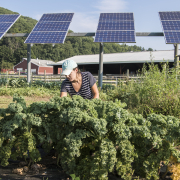 Photo by Dennis Schroeder / NREL
Photo by Dennis Schroeder / NREL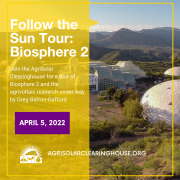
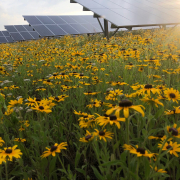
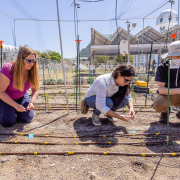
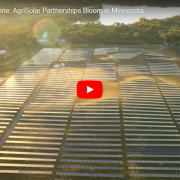
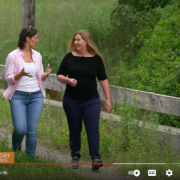
 Canva Pro
Canva Pro NCAT
NCAT